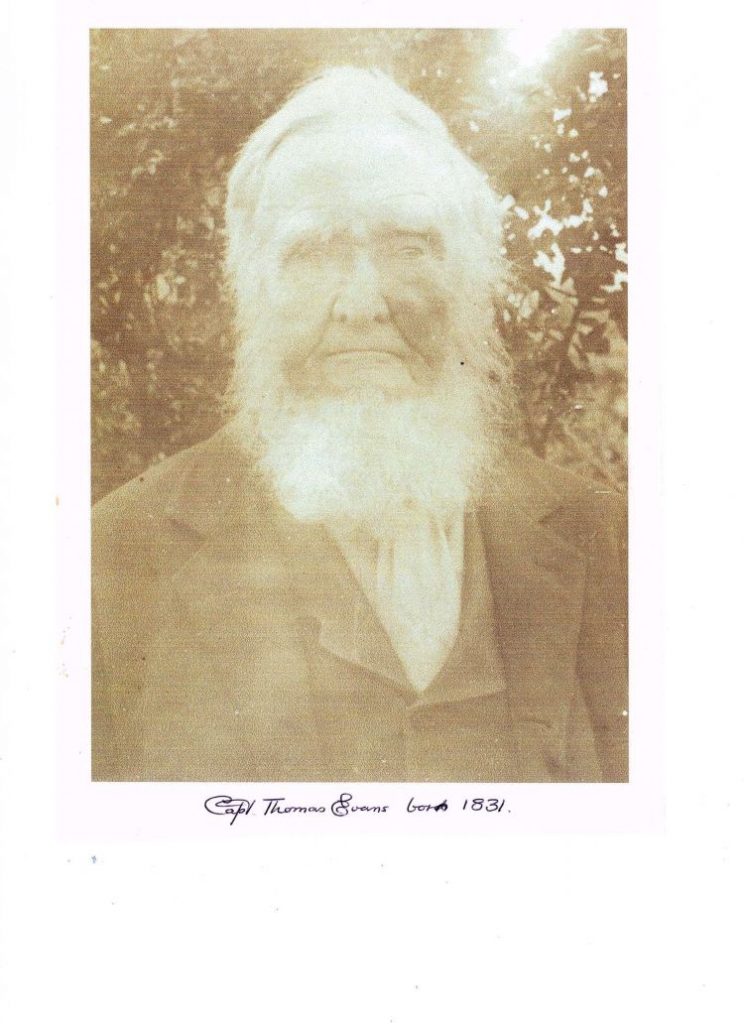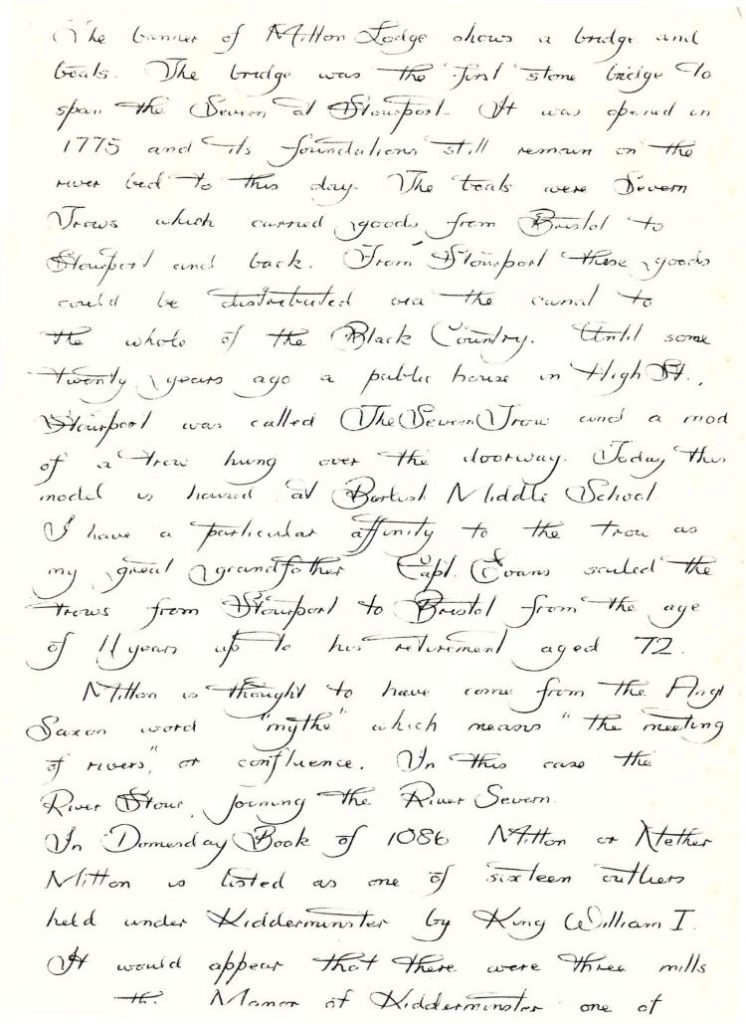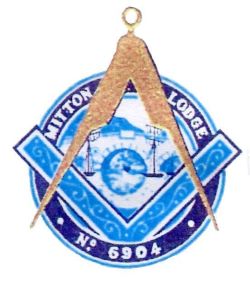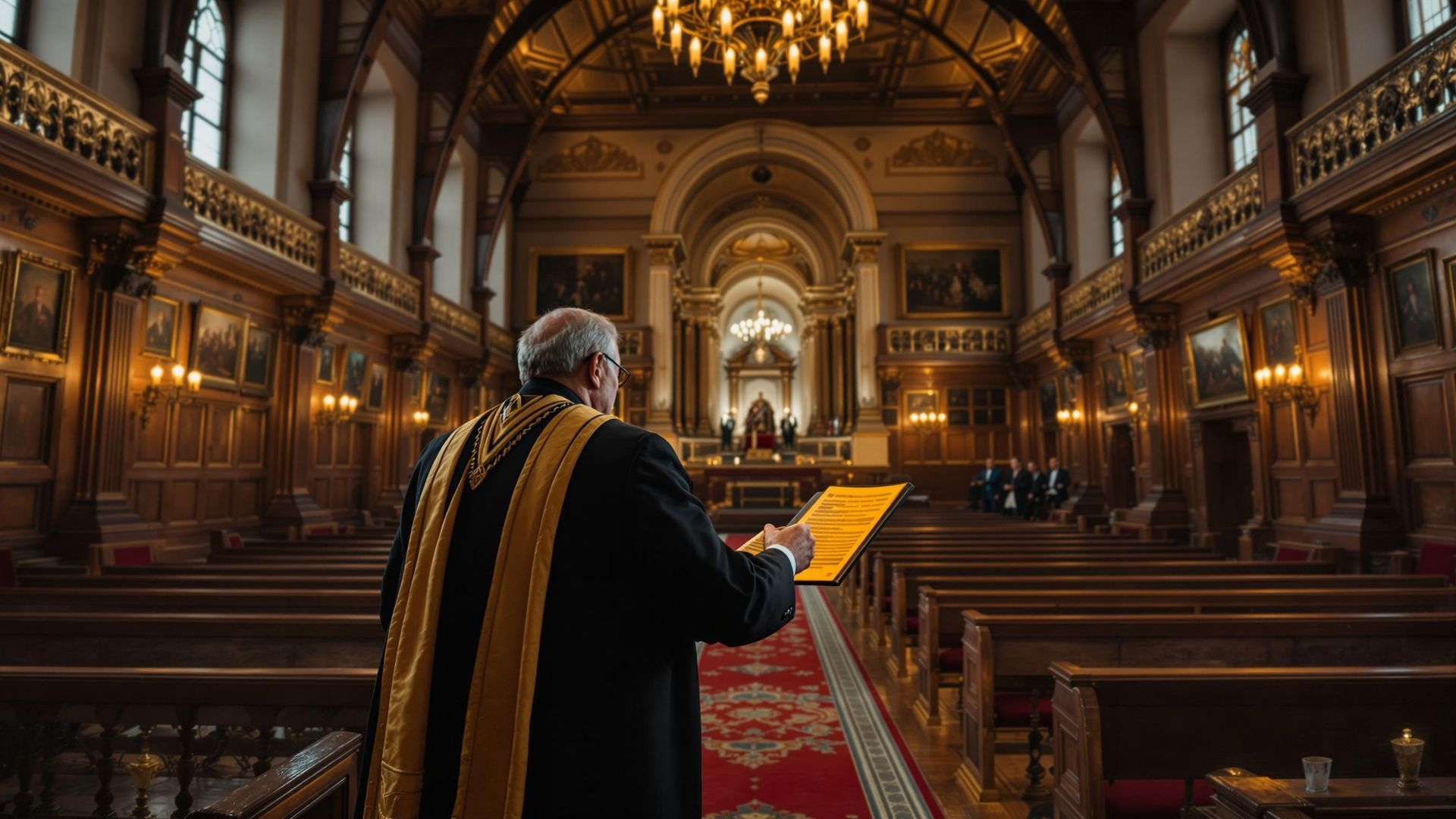Mitton Lodge No.6904 was born in Stourport on 4th March 1950, the third Lodge in the town. Among its Founders, who numbered eighteen, were nine members of second lodge in the town, Severn Lodge.
Why the name Mitton was chosen is not known, but the name ‘Myttun’ was recorded in the year 841 and the name ‘Myttune’ may be found in the Domesday Book. It is that area of land between the rivers Stour and Severn and was two hamlets of Upper and Lower Mitton. In 1771 after a large water-bourne trade had developed following the building of the new Staffordshire and Worcestershire canal joining the Rivers Severn and Stour at Lower Mitton, the new town was renamed ‘Stourport’, (the ‘on-Severn’ was not added until 1934).
Who designed the Lodge badge is not recorded, but it depicts the old bridge over the Severn with two ‘Trows’ – the old vessels used for carrying goods to Bristol from as far away as Coalbrookdale in Staffordshire and later from the Black Country.
Membership of the Lodge grew steadily until after ten years there were 42 members and 3 honorary members and after 20 years 58 members and 1 honorary members. After 30 years there was a membership of 55 and 3 honorary members and by 50 years, the Golden Jubilee Year, 48 members and 2 honorary members.


The Meaning of Mitton
‘Mitton’ is thought to have come from the Anglo-Saxon word ‘mythe’ which means ‘meeting of rivers or confluence’. In this case the River Stour joining the River Severn. In the Doomsday Book of 1086, Mitton or Nether Mitton is listed as one of sixteen “outliers” held under Kidderminster by William 1st. It would appear that there were three mills on the Manor of Kidderminster; one of which was Lower Mitton.
So Lower Mitton was essentially a rural village with a small but growing population until the middle of the 18th Century when Brindley followed the valley of the River Stour to build a canal, later called The Staffordshire and Worcestershire Canal, linking the Black Country with the River Severn and hence the great port of Bristol and the rest of the world.
Prior to the bridge being built at Stourport, Mitton was linked to Areley Kings, which is also mentioned in the Doomsday Book, by a ford across the Severn at Redstone Caves some half mile downstream from Stourport. This ford or shallow crossing place is mentioned in a poem by Agnes Cadman entitled ‘The Saga of Mitton’, as is the place where the body of Prince Arthur, son of Henry VII, who died on his honeymoon at Ludlow Castle and was brought to cross The Severn on its way to London.
The banner of Mitton Lodge shows a bridge and boats. The bridge was the first stone bridge to span the River Severn at Stourport. It was opened in 1775 and its foundations still remain on the riverbed to this day. The boats are Severn Trows that carried goods from Bristol to Stourport and back.
Until some twenty years ago a public house in the High Street, Stourport was called The Severn Trow and the model which depicted its origin is housed in Burlish Middle School

